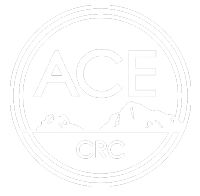Antarctic voyage brings home rare glimpse under the sea ice
An international sea ice voyage has returned to Hobart with spectacular images of the world beneath the East Antarctic sea ice.
Researchers on board Australia’s icebreaker, Aurora Australis, spent two months in Antarctica studying the link between sea ice and Southern Ocean ecosystems as part of the Sea Ice Physics and Ecosystem eXperiment-II (SIPEX-II). This significant voyage was jointly conducted by the Australian Antarctic Division (AAD) and the Antarctic Climate and Ecosystems CRC (ACE).
Science Leader, Dr Klaus Meiners, said an underwater robot (Remotely Operated Vehicle or ROV) captured almost 40 hours of vision of jumbled giant ice blocks, sea ice algae and krill under the sea ice.
The robot was deployed through a hole in the ice and engineers used a joystick to operate and monitor its progress via four high-definition stereo-vision cameras.
“The ROV’s icy dives transported us into a different world. The subsurface of the ice was like a badly eroded mountain range, with Antarctic krill and patchy areas of algae,” Dr Meiners said.
“The ROV’s main role was to measure the amount and distribution of sea ice algae using a smart light sensor. This instrument measures the reduction in the blue and green wavelengths of light beneath the sea ice, allowing us to estimate the overall amount of algae.”
Sea ice algae live within and attached to the bottom of the sea ice and are a key food source for Antarctic krill, which in turn are the primary food for larger animals such as penguins, seals and whales.
“Climate models predict sea ice in Antarctica could decline by 35% in volume by the end of the century, so understanding the distribution of sea ice algae will enable us to assess the impacts of climate change on the Antarctic marine ecosystems into the future,” Dr Meiners said.
The ROV scientists will spend the coming months analysing their data sets to understand relationships between sea ice thickness and algal biomass.
Also on the voyage scientists, including AAD krill aquarium manager, Rob King, investigated how Antarctic larval and juvenile krill survive the winter months beneath the sea ice. Krill have 12 larval stages before they become juveniles and then sexually mature adults.
“Most krill research has been conducted on adult krill during the Antarctic summer and only a few studies have focused on the larval stages during winter,” Rob King said.
“On this trip we were able to use a high-volume water pumping system off the side of the Aurora Australis, to capture live larval and juvenile krill under the ice and look at their metabolism, growth rate and diet.”
The krill pump uses a large, insulated pipe to suck 400 litres of water per minute into a filter system housed in the ship’s oceanographic instrument room. The captured krill are then gently washed into a holding tank for transfer to the ship’s laboratories.
“There have been suggestions that the krill population around West Antarctica has already declined significantly as a result of changes caused by the decline in sea ice,” Mr King said.
“By bringing together under sea ice information available from the ROV and physiological studies on krill larvae we want to understand how climate change alters sea ice conditions in East Antarctica and what impact this will have on the dynamics of krill larval and adult populations in this area.”
SIPEX-II is a continuation and extension of the first SIPEX voyage which took place in 2007. More than 50 scientists from Australia, Belgium, Canada, France, Germany, Japan, New Zealand and the United States took part in the voyage.
A range of multi-disciplinary projects looking at the physical and biological elements of the Antarctic sea-ice zone were undertaken on this internationally collaborative voyage.
From the air researchers used laser and radar-equipped helicopters to determine sea ice and snow cover properties. On the ice floes others worked on ice algae physiology and sea ice biogeochemistry. Under the ice, instruments measured water properties including salinity, oxygen and temperature.
All of this information contributes to scientists’ greater understanding of how sea ice might be affected by climate change, enabling them to assess its impacts on the function of ecosystems in the ice-covered Southern Ocean.






















